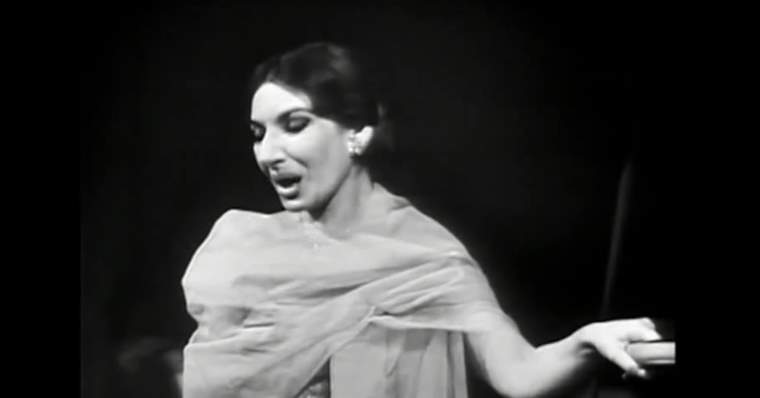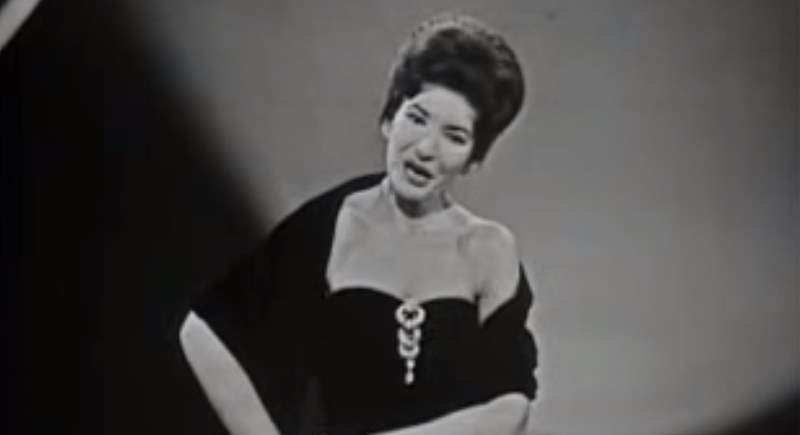Maria Callas sings O don fatale, a renowned aria from Giuseppe Verdi’s grand opera “Don Carlo”. This concert was recorded live in Hamburg in 1962. Sinfonieorchester des NDR under the baton of Georges Prêtre.
O Don Fatale
O don fatale is a renowned piece from Giuseppe Verdi’s grand opera “Don Carlo”, written in four acts and based on the dramatic life events of the Prince of Spain, Don Carlos. This aria is performed in Act 3 by the character Princess Eboli, a lady-in-waiting to Elisabeth of Valois, who is Don Carlo’s stepmother and the woman he loves.
In “O don fatale”, Eboli is filled with remorse and self-reproach. She has just revealed her secret love for Don Carlo to him and, in a fit of jealousy over his love for Elisabeth, has unintentionally betrayed Elisabeth’s confidence in the King, leading to severe complications. Eboli regrets her actions and curses her beauty (“O don fatale, o don crudel”), blaming it for her vanity and for leading her astray. She resolves to go into exile and spend the rest of her life helping others, as an act of atonement.
This aria is a tour de force for a mezzo-soprano, requiring strong dramatic interpretation, vocal power, and agility. The singer must convey a wide range of emotions from anger and despair to determination and resolve, all the while maintaining control over Verdi’s demanding vocal lines. The dramatic intensity of “O don fatale” makes it a highlight of the opera and a favorite among audiences.
O Don Fatale lyrics (text)
Don Carlo was originally set to a French text (as Don Carlos), but it’s usually given in its Italian version.
Italian
O don fatale! O don crudel
che in suo furor mi fece il ciel!
Tu che ci fai sì vane, altere,
ti maledico… Ti maledico,o mia beltà!
Versar, versar sol posso il pianto,
speme non ho, soffrir dovrò!
Il mio delitto è orribil tanto
che cancellar mai nol potrò!
Ti maledico! Ti maledico, o mia beltà!
O mia Regina, io t’immolai
al folle error di questo cor.
Solo in un chiostro al mondo ormai
dovrò celar il mio dolor!
Ohimè! Ohimè! O mia Regina…
O ciel! E Carlo! a morte domani…
Gran Dio! A morte andar vedrò!
Ah, un dì mi resta!
La speme mi arride, ah!
Sia benedetto il ciel! Lo salverò!
Un dì mi resta!
Ah, sia benedetto il ciel! Ah! lo salverò!
English translation “Oh, awful gift”
Oh, awful gift! O terrible gift
That Heaven gave to me in its rage!
You, that make me so vain and arrogant;
I curse you… I curse you, oh my beauty!
I can only shed tears upon tears,
I have no hope, I shall suffer so!
My crime is so very horrible
That I won’t ever be able to wash it away!
I curse you! I curse you, oh my beauty!
Oh, my Queen, I have sacrificed you
For the sake of my heart’s crazed error!
Now, from the world, only in a convent
Will I be able to hide my pain?
Oh, dear! Oh, dear! Oh, my Queen…
Oh, Heaven! And Carlos! Being taken to his death tomorrow…
Oh, dear Lord! I will see him being taken to his death!
Ah, I have one day left!
Yet hope is smiling at me, ah!
Heaven be blessed, I shall save him!
I have one day left!
Ah, Heaven be blessed, I shall save him!
Sources
- Don Carlos on Wikipedia
- O don Fatale lyrics on the Lyrics Translate website


